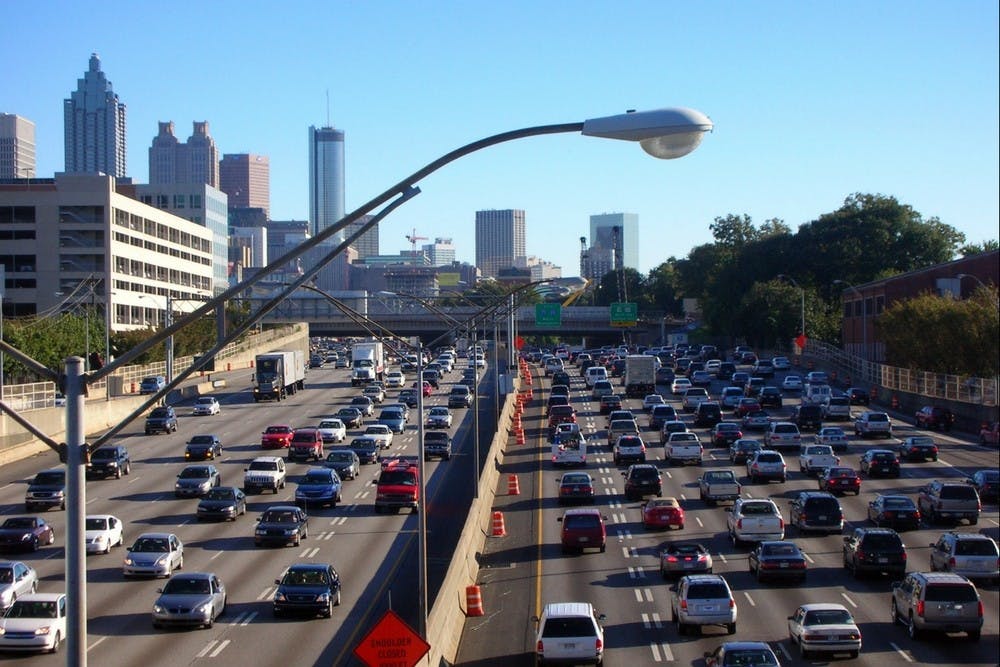Rush hour drivers may have more to worry about than traffic jams, according to a recent study.
Measurements made by researchers at Duke, Emory University and the Georgia Institute of Technology showed that car drivers and passengers were twice as exposed to air pollution as someone near the roadside.
“Particles and gases can transform a whole lot just a few feet from their emission source,” said Heidi Vreeland, a doctoral student in environmental engineering at Duke and an air quality research assistant at Georgia Tech. “So when you’re right there, you are being exposed to something that actually is different than if you were walking along the road.”
Vreeland explained that their team installed sensors inside of cars that measured air quality and found that several cars carried high levels of harmful air particles. These particles can cause an imbalance in the human oxidative stress pathway, she explained, adding that those affected might begin to suffer from chest inflammation and difficulty breathing.
Although some of the pollutants the team studied have been linked to cancer and neurodegenerative diseases, Vreeland also cautioned against obsessing over their dangers.
“I don’t want people to be afraid, but I think it’s something people should definitely be aware of,” she said.
Comparing particle levels in cars and on the roadside, the team found that the two differed starkly, an observation that Vreeland attributed to two main factors.
The time of day and sunshine exposure is one major variable that can contribute to in-car pollution, she said.
“Everyone has known for a long time if you measure over a day, you will see the highest particle concentration in morning rush hour as compared to afternoon rush hour,” she said. “That’s because the sun is out for the afternoon rush hour—even though it’s the same amount of cars—and the sun allows better mixing up into the air.”
Another culprit could be the chemical composition of these pollutants, which Vreeland said are classified as semivolatile.
She explained that this type of particle can alternate between the solid and gas phase based on environmental factors. During the peak of morning rush hour traffic, semivolatile pollutants are more likely in the solid form, in which they are the most dangerous.
The combination of less sunlight and more solid phase particles increases the “potential for oxidative stress” in humans, Vreeland noted.
“Most people are probably getting the majority of their exposure to particles from their morning commutes unless they work somewhere else like construction,” she said.
Measuring these pollutants was a key challenge for the team, since their unstable semivolatile nature made them difficult to study. For example, Vreeland said, a semivolatile in the solid phase might appear to be captured in a filter for initial measurement but then turn into a gas and escape further detection.
In their study, the team placed sensors in 60 cars in the Atlanta area, which picked up rush hour measurements between 7am and 9am. All of their study participants took well-trafficked roads, with some favoring the highway and others favoring side streets. Participants were also instructed to roll their windows up and down every 15 minutes and refrain from using their vehicle air-recirculation systems.
Vreeland said that despite expectations, they also found no major difference in particle levels between cars that drove primarily on side streets and those on the highway.
Down the road, the team hopes that their findings will make drivers more consciousness of the health risks associated with rush hour traffic.
“We are hoping that by seeing this elevated inflammatory marker, that people will hopefully drive less because that’s the best thing that people could do to reduce exposure,” Vreeland said.
She added, however, that not everyone may have the luxury of choosing whether or not to drive to work in the morning. Instead, she proposed that drivers follow previously published advice by Michael Bergin, another author of the study and professor of civil and environmental engineering.
“[Bergin] said that if you know you’re going to go into traffic, [you] have your windows up, you have your [air] cycle button on and you make sure that your air filter is clean and that you’re replacing it when the manufacturer says to—[that is] the best thing you can do,” Vreeland said.
Get The Chronicle straight to your inbox
Signup for our weekly newsletter. Cancel at any time.

